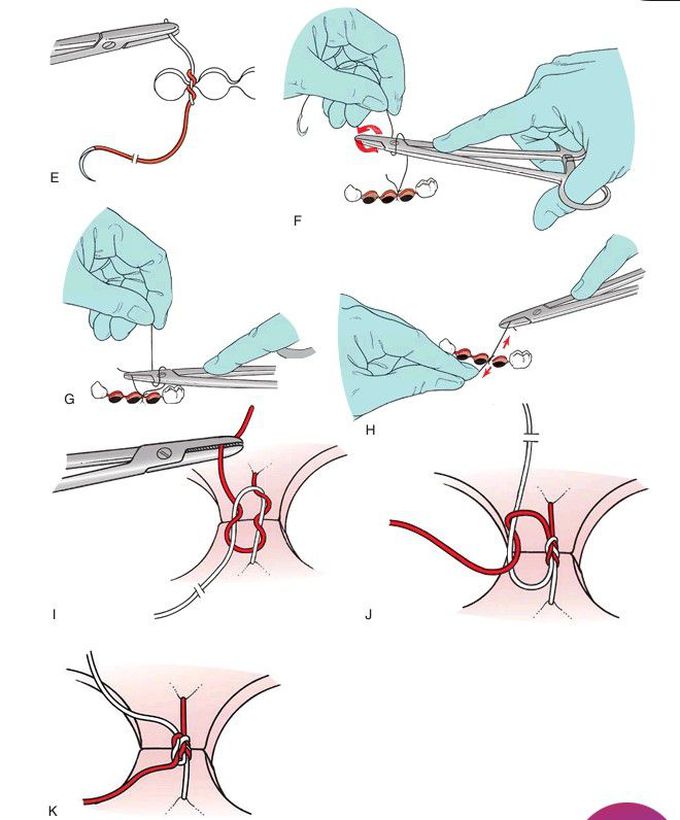


Surgeon's knot
End of the first step of the surgeon’s knot. The double wrap has resulted in a double overhand knot. This increases the friction in the knot and will keep the wound edges together until the second portion of the knot is tied. (F) The needle holder is then released from the short end of the suture and held in the same position as when the knot-tying procedure began. The left hand then makes a single wrap in the counterclockwise direction. (G) The needle holder then grasps the short end of the suture at its end. (H) This portion of the knot is completed by pulling this loop firmly down against the previous portion of the knot. (I) This completes the surgeon’s knot. The double loop of the first pass holds tissue together until the second portion of the square knot can be tied. (J) Most surgeons add a third throw to their instrument tie when using a resorbable suture material. The needle holder is repositioned in the original position, and one wrap is placed around the needle holder in the original clockwise direction. The short end of the suture is grasped and tightened down firmly to form the second square knot. (K) The final throw of three knots is tightened firmly. (Note: For demonstration purposes, the first knot is left loose here, but in actual knot tying, the first knot is tightened before creating the second knot.) Both ends of the suture are then cut, leaving about 1 cm or less of the suture end with the knot.

